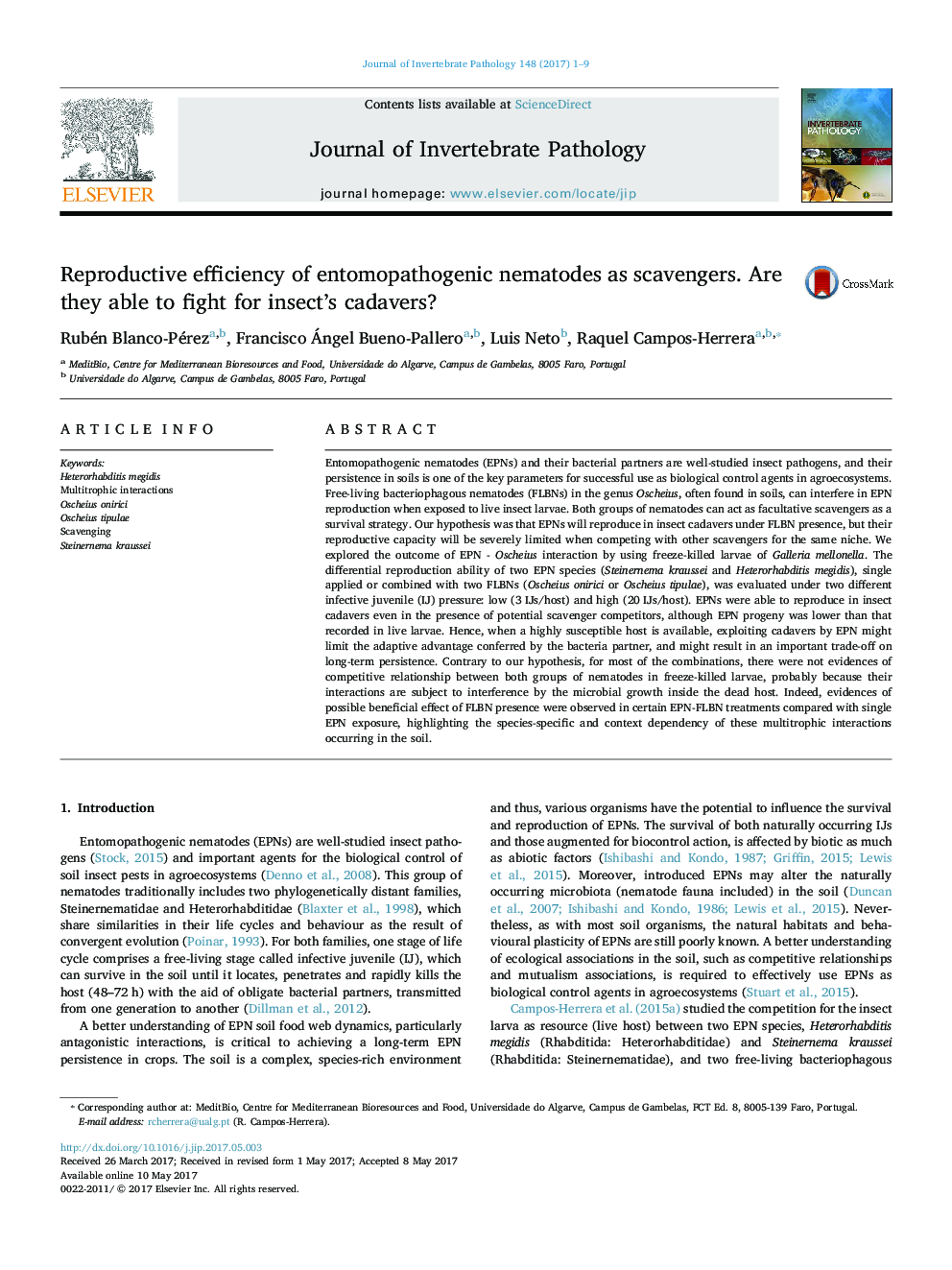| کد مقاله | کد نشریه | سال انتشار | مقاله انگلیسی | نسخه تمام متن |
|---|---|---|---|---|
| 5767017 | 1628204 | 2017 | 9 صفحه PDF | دانلود رایگان |

- Entomopathogenic nematodes (EPNs) co-occur with free-living nematodes (FLNs) in soils.
- EPNs were able to reproduce in insect cadavers in the presence of scavenger FLNs.
- EPN reproductive success is lower when acting as scavengers.
- Using cadavers by EPNs might limit the advantage conferred by the bacteria partner.
- Scavenging EPN-FLN interaction is species-specific and context dependency.
Entomopathogenic nematodes (EPNs) and their bacterial partners are well-studied insect pathogens, and their persistence in soils is one of the key parameters for successful use as biological control agents in agroecosystems. Free-living bacteriophagous nematodes (FLBNs) in the genus Oscheius, often found in soils, can interfere in EPN reproduction when exposed to live insect larvae. Both groups of nematodes can act as facultative scavengers as a survival strategy. Our hypothesis was that EPNs will reproduce in insect cadavers under FLBN presence, but their reproductive capacity will be severely limited when competing with other scavengers for the same niche. We explored the outcome of EPN - Oscheius interaction by using freeze-killed larvae of Galleria mellonella. The differential reproduction ability of two EPN species (Steinernema kraussei and Heterorhabditis megidis), single applied or combined with two FLBNs (Oscheius onirici or Oscheius tipulae), was evaluated under two different infective juvenile (IJ) pressure: low (3Â IJs/host) and high (20Â IJs/host). EPNs were able to reproduce in insect cadavers even in the presence of potential scavenger competitors, although EPN progeny was lower than that recorded in live larvae. Hence, when a highly susceptible host is available, exploiting cadavers by EPN might limit the adaptive advantage conferred by the bacteria partner, and might result in an important trade-off on long-term persistence. Contrary to our hypothesis, for most of the combinations, there were not evidences of competitive relationship between both groups of nematodes in freeze-killed larvae, probably because their interactions are subject to interference by the microbial growth inside the dead host. Indeed, evidences of possible beneficial effect of FLBN presence were observed in certain EPN-FLBN treatments compared with single EPN exposure, highlighting the species-specific and context dependency of these multitrophic interactions occurring in the soil.
123
Journal: Journal of Invertebrate Pathology - Volume 148, September 2017, Pages 1-9